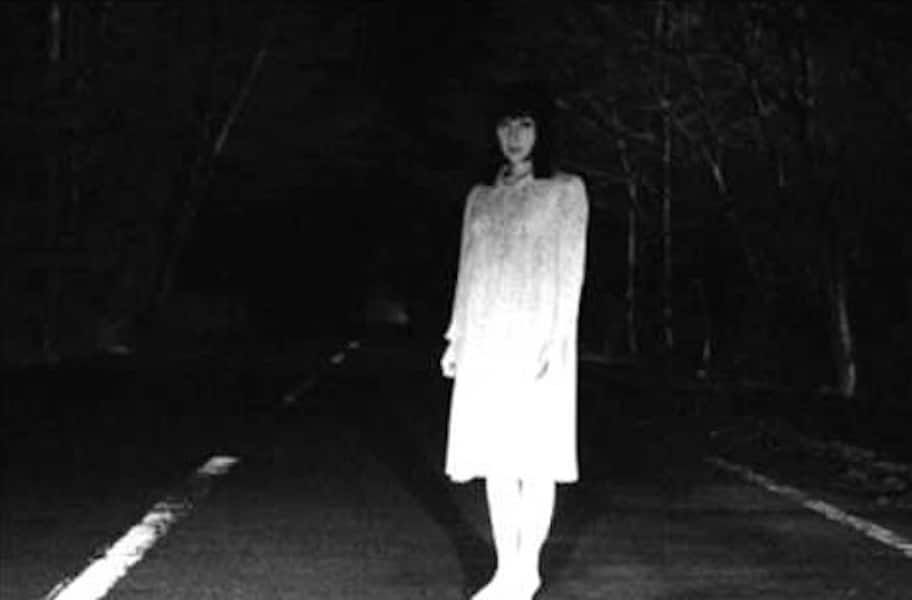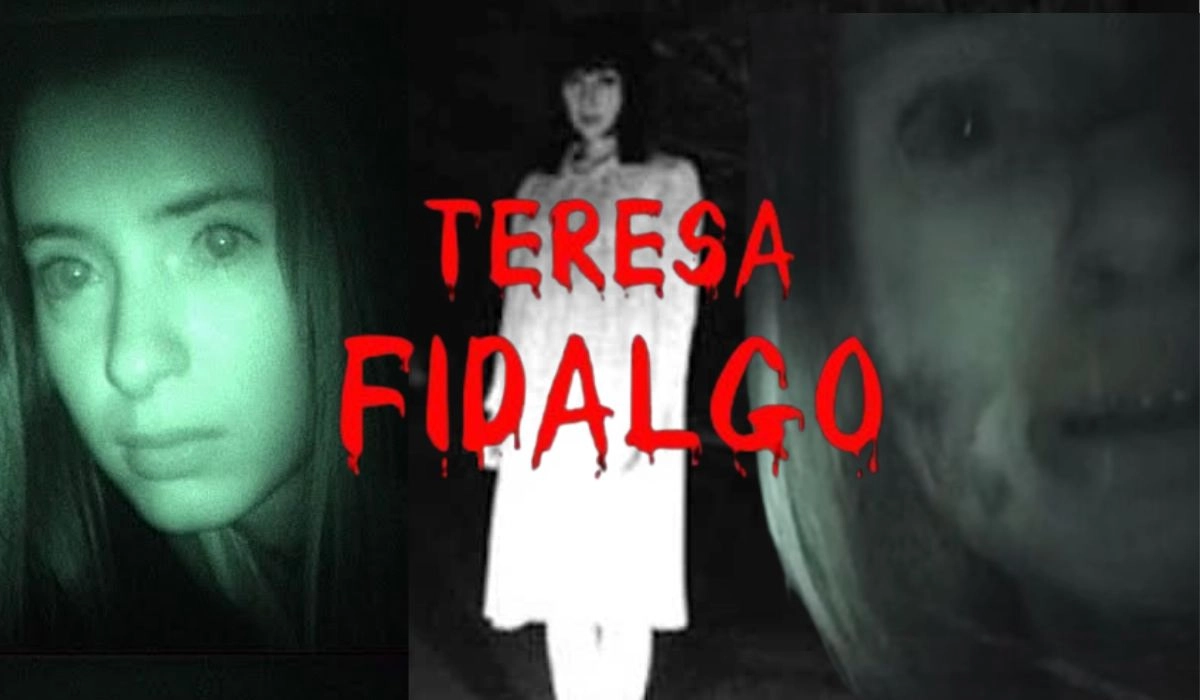Teresa Fidalgo: The Truth Behind The Viral Ghost Story & Origins
Have you ever stumbled upon a story so chilling, so pervasive across the digital landscape, that it sent a shiver down your spine? The tale of Teresa Fidalgo, a name whispered in hushed tones on social media, is a testament to the power of the internet to both create and propagate modern-day myths.
The legend of Teresa Fidalgo, a Portuguese woman said to have met a tragic end in a car accident in Sintra, Portugal, in 1983, has haunted the internet since the early 2000s. The story, disseminated through emails, text messages, and social media posts, revolves around a spectral figure, the ghost of Teresa, who purportedly curses those who fail to share her story. This chilling narrative, amplified by the viral nature of the digital age, has become a staple of online folklore.
But, what lies beneath the veil of this unsettling tale? Is Teresa Fidalgo a real ghost, a malevolent presence lurking in the digital shadows, or something far more mundane? Let's peel back the layers of this internet phenomenon and unearth the truth behind the legend.
| Aspect | Details |
|---|---|
| Character Name | Teresa Fidalgo |
| Origin | Fictional, originating from a short film. |
| Claimed Death | Car accident in Sintra, Portugal, in 1983. |
| Alleged Haunting | Targets those who do not share her story online, leading to a curse. |
| Notable Media | Short film "A Curva" (The Curve) by David Rebordo. |
| Viral Period | Early 2000s, gaining renewed attention in the 2010s |
| Real or Fictional | Fictional |
| Primary Medium of Spread | Social media platforms such as Facebook, Instagram, Twitter, WhatsApp, and TikTok |
| Cultural Impact | Inspired retellings and adaptations across various forms of media |
The genesis of the Teresa Fidalgo myth can be traced to a short film titled "A Curva" (The Curve), crafted by Portuguese producer David Rebordo. The film, released in 2003, depicted a chilling scenario involving a car accident and a hitchhiker named Teresa. The film's narrative, though fictional, sowed the seeds of the urban legend that would soon spread across the internet. It is a testament to the power of visual storytelling and how a well-crafted narrative can permeate the collective consciousness.
The story gained significant traction around 2003, and quickly spread through social media platforms, including Facebook, Instagram, Twitter, WhatsApp, and TikTok. The story typically involved a warning that if the message was not shared, misfortune would befall the reader. This element of a curse, a common motif in folklore, heightened the story's appeal and fueled its viral nature.
The chilling nature of the Teresa Fidalgo story stems from the use of evocative imagery and the psychological manipulation employed by the tale. The narrative plays on the fear of the unknown, the dread of the supernatural, and the innate human inclination to ward off bad luck by following instructions. This combination of psychological elements creates a potent recipe for online virality.
The core of the Teresa Fidalgo narrative revolves around the claim that a young woman named Teresa died in a car crash in Sintra, Portugal, in 1983, at the age of 27. According to the legend, her ghost haunts the road where she died and curses those who do not share her story. The alleged incident was said to have been captured on camera, with footage purportedly showing her body being pulled from the wreckage. The story quickly gained momentum on the internet, amplified by the human tendency to believe in the supernatural.
A significant factor in the legend's persistence is the use of visual media. In 2003, a video surfaced on the internet claiming to depict Teresa Fidalgo. This video, along with images and text-based warnings, contributed to the widespread dissemination of the myth. The use of multimedia formats, including videos and images, significantly increased the story's reach and its impact on the audience. The ability to share and transmit multimedia content across various platforms propelled the legend further.
The success of the Teresa Fidalgo story lies in its ability to tap into basic human fears and anxieties. The idea of a vengeful ghost, a curse, and the consequences of not adhering to the story's demands create a chilling effect on the audience. This, in turn, drives the sharing of the story, perpetuating its spread and making it a constant presence in the digital realm.
As the story of Teresa Fidalgo continued to circulate, its message adapted to the ever-changing landscape of the internet. The narrative's longevity is due to its capacity to transform and evolve with the times, adopting new platforms and formats to ensure its continued relevance. The core message of the curse, however, has remained consistent.
While the Teresa Fidalgo story has captivated many and continues to circulate on various platforms, it is essential to distinguish reality from fiction. The truth is that Teresa Fidalgo's story is a product of the short film A Curva, created by Portuguese producer David Rebordo.
The story, like many internet myths, underscores the importance of critical thinking. It serves as a reminder to scrutinize the information we encounter, especially in the digital world where misinformation can spread rapidly. The story also highlights the power of cultural narrative and the enduring appeal of stories of the supernatural.
The rise of the Teresa Fidalgo story also reflects the internet's role in the creation and propagation of contemporary folklore. The easy sharing and the anonymity offered by the internet have fostered a climate where urban legends can thrive. The digital space has become the perfect breeding ground for modern myths.
While Teresa Fidalgo may not be a real ghost, the story's impact on the internet is undeniable. It serves as a testament to the power of narrative and the human fascination with the unknown. The story of Teresa Fidalgo continues to haunt the internet, reminding us to question the stories that we encounter and to appreciate the fascinating nature of modern folklore.
The case of Teresa Fidalgo is more than just a ghost story; it's a reminder of the human propensity to believe and share, and the power of a well-crafted narrative to captivate and endure.
The allure of the Teresa Fidalgo story lies in its blend of mystery, fear, and the ever-present warning of supernatural consequences. The story's longevity stems from its ability to tap into the deepest anxieties of internet users.
The tale of Teresa Fidalgo is a modern-day cautionary story, a chilling reminder of the power of the internet to both entertain and to mislead. It is a vivid example of how stories, both real and imagined, continue to shape our understanding of the world.
The enduring presence of the Teresa Fidalgo story reminds us of the internet's capacity to serve as a hub for modern folklore, where tales of the supernatural can take root and flourish.


